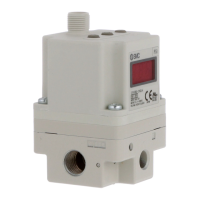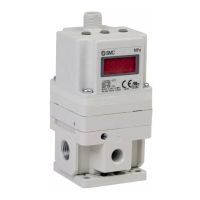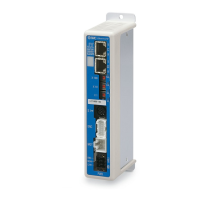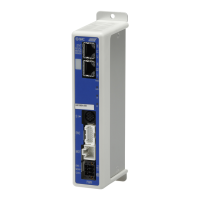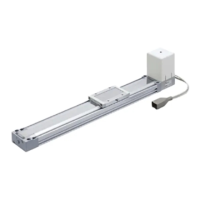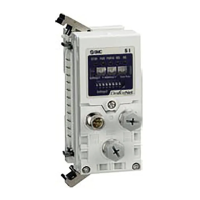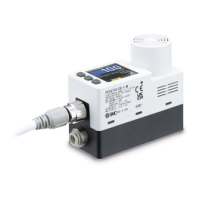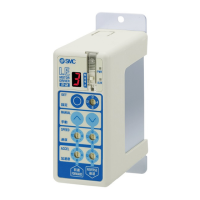Wiring
Connect the cable to the connector on the body with
the wiring arranged as shown below. Proceed
carefully, as incorrect wiring can cause damage.
Further, use DC power with sufficient capacity and a
low ripple.
Caution
1
2
3
4
Brown
Blue
White
Black
Note)
Body
3: (Blue) 1: (Brown)
2: (White)
4: (Black)
Wiring diagram
Brown
Blue
White
Black
Current signal type
Vs
Vs
A
Brown
Blue
White
Black
Voltage signal type
Vs
Vin
Vs : Power supply 24 VDC
12 to 15 VDC
RESET
Current Signal Type
Voltage Signal Type
Preset Input Type
Preset input type
Brown
White
Blue
Black
Power supply
Input signal
GND (COMMON)
Monitor output
S1
S2
Preset pressure
OFF
OFF
P1
ON
OFF
P2
OFF
ON
P3
ON
ON
P4
1
2
3
4
Brown
White
Blue
Black
Power supply
Input signal 1
GND (COMMON)
Input signal 2
Blue
Brown
White
Black
S2
S1
Analog output: Voltage type
Switch output: NPN type
Switch output: PNP type
Analog output: Current type
Brown
Blue
White
Black
Monitor output voltage
Brown
Blue
White
Black
Load
∗
Brown
Blue
White
Black
Load
∗
Monitor output wiring diagram
Brown
Blue
White
Black
Monitor output current
Be sure to read before handling. Refer to pages 14-21-3 to 14-21-4 for Safety Instructions and Common
Precautions.
Note) A right angle type cable is also available. The entry
direction for the right angle type connector is to the left
(SUP port side). Never rotate it, since it's not designed to
turn.
One of the preset pressures P1 through P4 is selected by the
ON/OFF combination of S1 and S2.
∗ For safety reasons, it is recommended that one of the preset pressures be
set to 0 MPa.
Vs : Power supply 24 VDC
12 to 15 VDC
A : Input signal 4 to 20 mADC
0to20mADC
Vs : Power supply
24 VDC
12 to
15 VDC
Vin
: Input signal
0 to 5 VDC
0 to 10 VDC
∗ When 30 mADC or more is applied, detecting device for overcurrent
starts activating and then emits an error signal. (Error number “5”)
Precautions

